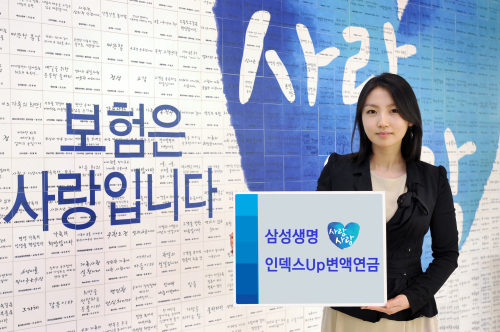Baby boomers looking to diversify real estate-heavy retirement savings
ByPublished : Aug. 10, 2011 - 19:13
For Korea’s baby boomer generation, post-retirement plans usually revolve around real estate investments. But this longstanding strategy, which relied solely on a continuously booming housing market, is being reconsidered as apartment prices remain in a protracted slump.
Baby boomers here, many of whom remain unprepared for their life after retirement, are required to shift their attention to financial instruments that can diversify their portfolio.
One major trend in the financial market in recent months is products that are designed to offer “monthly payment” when the installments are complete and the customers are ready to receive their due returns. Targeting baby boomers, the products take various forms: mutual funds, ELS, Brazilian government bonds and managed funds.
Brokerage houses and related financial services providers are attracting fresh funds from baby boomer customers interested in receiving monthly payments after their retirement, as such products largely meet the twin demands of stability and profitability.
Industry data showed that this year alone about 1.2 trillion won ($1.1 billion) flowed into mutual funds and similar instruments promising to offer monthly payments upon retirement, a dramatic development that sent a positive signal to financial firms tracking the potentially huge market for Korean baby boomers.
The popularity of such pension-like financial products underscores the dearth of other alternatives. Most Koreans are covered by the state pension system, but the public expectation remains low, due largely to the rapid aging of society and its weakening fiscal status.
Baby boomers here, many of whom remain unprepared for their life after retirement, are required to shift their attention to financial instruments that can diversify their portfolio.
One major trend in the financial market in recent months is products that are designed to offer “monthly payment” when the installments are complete and the customers are ready to receive their due returns. Targeting baby boomers, the products take various forms: mutual funds, ELS, Brazilian government bonds and managed funds.
Brokerage houses and related financial services providers are attracting fresh funds from baby boomer customers interested in receiving monthly payments after their retirement, as such products largely meet the twin demands of stability and profitability.
Industry data showed that this year alone about 1.2 trillion won ($1.1 billion) flowed into mutual funds and similar instruments promising to offer monthly payments upon retirement, a dramatic development that sent a positive signal to financial firms tracking the potentially huge market for Korean baby boomers.
The popularity of such pension-like financial products underscores the dearth of other alternatives. Most Koreans are covered by the state pension system, but the public expectation remains low, due largely to the rapid aging of society and its weakening fiscal status.

The problem is that the baby boomers here do not have enough protection or savings for retirement. After all, their disposable income is squeezed as the generation usually takes care of their parents and also forks out big checks for their children. Statistics Korea’s household finance data showed that the baby boomer’s average financial assets amount to 73 million won, just above their liability of 58 million won, leaving little room for active portfolio management.
The global financial market has been showing greater instability in recent years, with a major crisis in late 2008 denting the investment appetite of investors. The fiscal debt crises in the U.S. and Europe are also gripping investors, causing anxiety for baby boomers who feel they have to act quickly to find a reliable channel to manage their funds in their after-retirement phase.
The complicated picture is a far cry from the good old days when retirees needed only simple rules. Before 1997, Korean banks and financial institutions asked their customers to put their money in savings accounts. Actually, such simple investment was enough as interest rates were comfortably high, usually hovering at more than 12 percent. At the same time, much of the baby boomers’ investment were channeled to the apartments, whose prices climbed at a rapid pace, bringing in sizable income for retirement purposes.
Things have changed drastically, and experts said the baby boomers should think twice before they hastily jump into new financial products for their retirement period. The above-mentioned products for monthly payouts are also relatively new, which means they are yet to be fully tested in the coming years.
Insurers, meanwhile, are ramping up marketing for services and products customized for the baby boomers. The concerns about the aging society are fueling the growth of services that guarantee regular payments or health coverage in the long term.
Samsung Life’s “Index Up Variable Universal Life Insurance” has some 300,000 customers. Samsung’s best-selling product makes sure customers receive a minimum payment even if the stock index declines. Customers can draw up their own options, depending their retirement needs and life plan.
Kyobo Life’s “Kyobo 100-Year-Old Variable Universal Life Insurance” targets a new field of opportunity by offering a chance in which customers can earn investment returns even when they are receiving monthly payments during their post-retirement years. The idea is that the remaining funds in the accounts continue to be invested in stocks and bonds even after the payment starts.
By Yang Sung-jin (insight@heraldcorp.com)



![[Exclusive] Korean military set to ban iPhones over 'security' concerns](http://res.heraldm.com/phpwas/restmb_idxmake.php?idx=644&simg=/content/image/2024/04/23/20240423050599_0.jpg&u=20240423183955)

![[Graphic News] 77% of young Koreans still financially dependent](http://res.heraldm.com/phpwas/restmb_idxmake.php?idx=644&simg=/content/image/2024/04/22/20240422050762_0.gif&u=)



![[Pressure points] Leggings in public: Fashion statement or social faux pas?](http://res.heraldm.com/phpwas/restmb_idxmake.php?idx=644&simg=/content/image/2024/04/23/20240423050669_0.jpg&u=)









